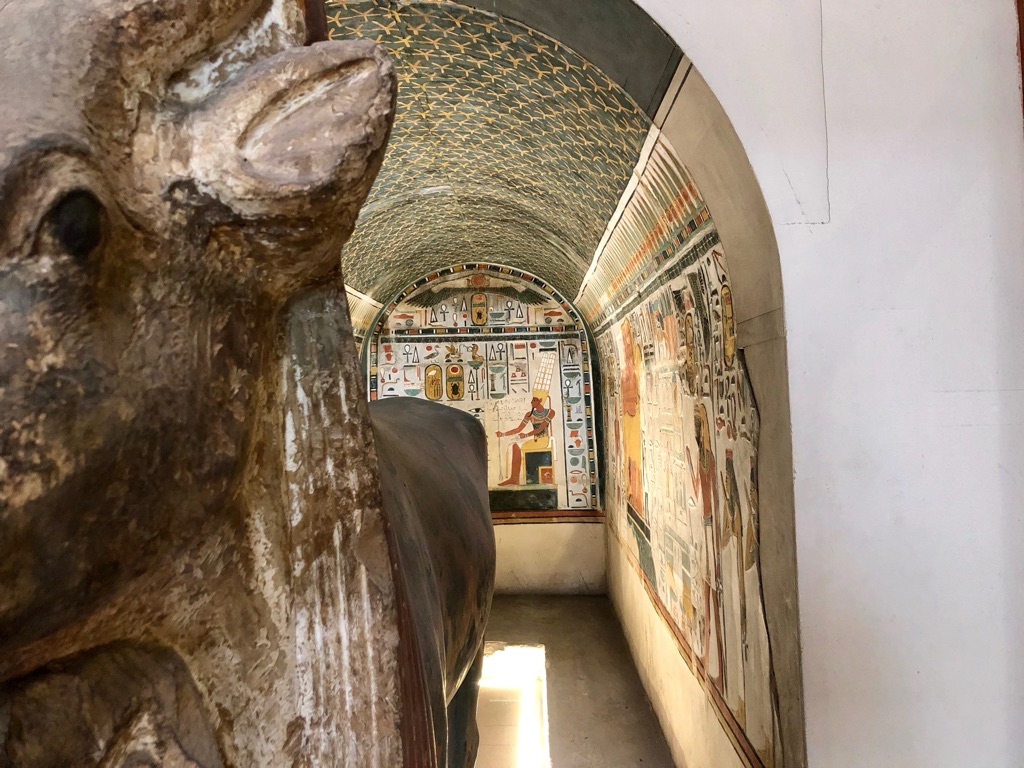The Hathor Chapel is a significant ancient Egyptian structure dedicated to Hathor, the goddess of love, beauty, and music. This chapel is part of the larger mortuary temple complex of Queen Hatshepsut, located at Deir el-Bahri, near Luxor. The chapel showcases the deep connection between the queen and the goddess, reflecting the religious and cultural values of the time. Its intricate carvings and architectural design offer insights into ancient Egyptian art and worship practices.
Get your dose of History via Email
Historical Background of Hathor Chapel
The Hathor Chapel was discovered within the Temple of Hatshepsut, one of Egypt’s most remarkable architectural feats. Built during the 18th Dynasty, the temple honors both the pharaoh and the deities. The chapel itself is a testament to the special bond between Hatshepsut and Hathor. Archaeologists have unearthed evidence of the chapel’s significance through reliefs and inscriptions that adorn its walls.
Queen Hatshepsut, the mastermind behind the temple, reigned as one of the few female pharaohs. She commissioned the construction of the complex, which included the Hathor Chapel, to solidify her divine right to rule. The chapel’s discovery shed light on her innovative approach to architecture and religion. It was unearthed by a team led by Polish archaeologists in the 20th century, revealing its historical importance.
The Hathor Chapel has seen various inhabitants and uses over the centuries. After Hatshepsut’s death, subsequent rulers, including Thutmose III, made their mark on the chapel. It has also been the scene of significant religious ceremonies, serving as a pilgrimage site for those worshipping Hathor.
Throughout history, the chapel has withstood the test of time, surviving natural and human-induced changes. It has been restored several times to preserve its original grandeur. The site continues to be an important focus for Egyptologists and historians, who seek to understand the complexities of ancient Egyptian society.
The Hathor Chapel’s historical significance is not only in its construction but also in its enduring legacy. It provides a window into the past, offering a glimpse of the religious practices, artistic expressions, and political power plays of ancient Egypt.
About Hathor Chapel
The Hathor Chapel stands as a masterpiece of ancient Egyptian architecture. It is part of the larger temple complex dedicated to Queen Hatshepsut, located on the west bank of the Nile. The chapel’s design and construction methods reflect the advanced skills of Egyptian artisans of the time.
Constructed from limestone, the chapel features a series of columns with Hathor-headed capitals, a distinctive architectural element. These columns support the structure and add to its aesthetic appeal. The walls of the chapel are adorned with vibrant reliefs and hieroglyphs that depict various offerings to Hathor.
One of the architectural highlights of the Hathor Chapel is its sanctuary. This sacred space housed a statue of the goddess, where rituals and offerings were made. The sanctuary’s design allowed for the interplay of light and shadow, creating a mystical atmosphere for worshippers.
The chapel’s construction materials were sourced locally, with limestone quarried from nearby hills. The builders employed advanced techniques for carving and assembling the stone, ensuring the chapel’s durability and beauty. The precision of the craftsmanship is evident in the detailed carvings that have withstood centuries.
Overall, the Hathor Chapel is a testament to the ingenuity of ancient Egyptian builders. Its preservation allows modern visitors to marvel at the architectural prowess and artistic vision of a civilization long past.
Theories and Interpretations
The Hathor Chapel has been the subject of various theories and interpretations over the years. Its purpose and significance have intrigued scholars, leading to numerous studies and debates. The chapel’s connection to Hathor suggests it played a vital role in religious ceremonies.
Some theories propose that the chapel served as a site for music and celebration, fitting for the goddess of joy. The reliefs depicting musical instruments support this idea. Others believe the chapel was a place of healing, as Hathor was also associated with health and well-being.
The mysteries of the Hathor Chapel extend to its artistic depictions. Some scenes require interpretation to match historical records, as they do not always align with known events. This has led to discussions about the political and religious messages Hatshepsut aimed to convey.
Dating the chapel has been possible through various methods, including carbon dating and analysis of the inscriptions. These techniques have helped establish a timeline for the chapel’s construction and use, providing context for its historical significance.
Overall, the Hathor Chapel remains a subject of fascination. Its many layers of meaning continue to be uncovered by historians and archaeologists, each finding adding to the rich tapestry of ancient Egyptian culture.
At a glance
Country: Egypt
Civilization: Ancient Egyptian
Age: 18th Dynasty, approximately 1478-1458 BC

